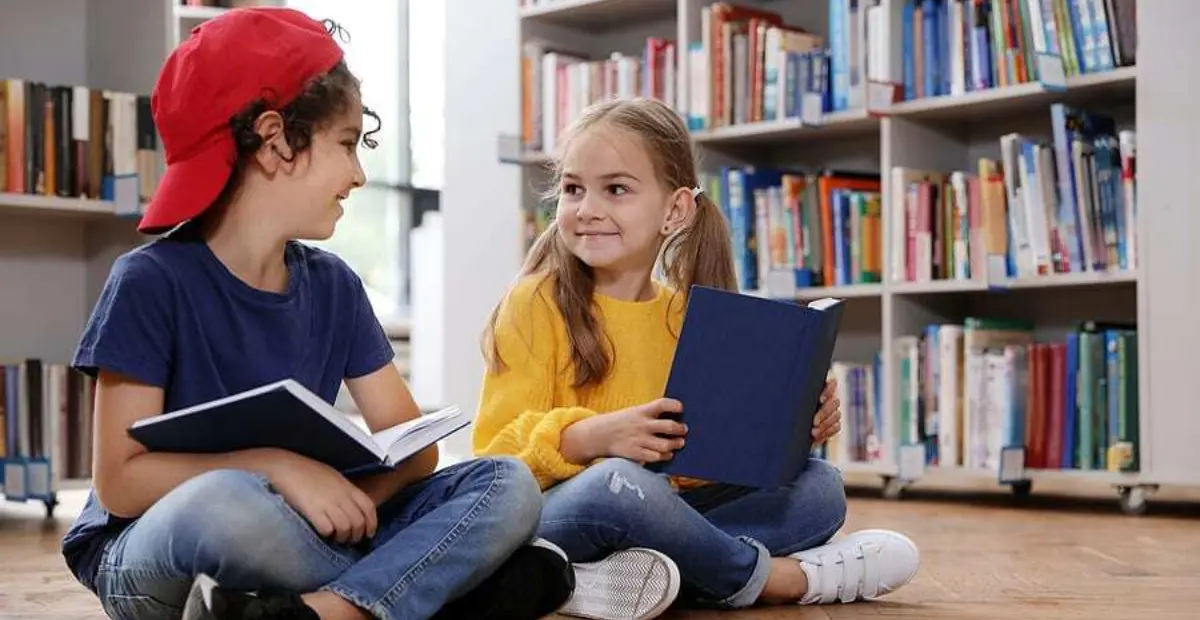Books have encouraged, taught, and provided new experiences to children for many years.
Books play a significant role in a child's learning environment. As they develop, they are introduced to many genres that encourage learning, resolving conflict, embracing imagination, and discovering new ideas.
Parents may not realize that many of the books their children read will instill life-long lessons about navigating relationships, decision-making, self-awareness, and social awareness – otherwise known as Social and Emotional Learning (SEL).
What is Social and Emotional Learning?
According to The Collaborative for Academic, Social, and Emotional Learning (CASEL), SEL is the process through which adults and children understand how to manage emotions, set goals, show empathy for others, and nurture relationships.
CASEL supports teachers, parents, students, and even employers in cultivating healthy relationships, conscious decision-making skills, emotional management, and self-awareness.
As children grow into adults, SEL skills are put into action in everyday life. Especially with social awareness, kids learn how to accept a different perspective and navigate conflicts and unfamiliar social interactions in an emotionally healthy way.
Ways to Teach Kids about SEL
The majority of learning new life skills starts at home. As parents model appropriate behavior, the children will learn by watching, internalizing, and imitating their observations.
Additionally, CASEL recommends introducing the concept of SEL in classrooms through reading and other curricula. SEL is more than a 30-minute reading break or a placeholder in lesson plans. When presented as a systemic approach, SEL is infused into all facets of students' lives: at home, in school, and the community.
Social and Emotional Learning Booklist
Here are books from our 2020 Wish List that focus on SEL.
Use these books in your classroom or at home to foster conversations about the value of SEL.
A Cat and a Dog / Un gato y un perro
By: Claire Masurel Illustrated by Bob Kolar A cat and a dog live together. But they do NOT like each other. Can they ever learn to be friends? 32pgs
Pig Wants a Peach
By: Liza Charlesworth Illustrated by Ian Smith Pig wants a peach. But pig gets many other foods. Will she get a peach? 16pgs
Please Write Back!
By: Jennifer E. Morris Illustrated by Jennifer E. Morris Alfie misses his grandma. He writes her a letter. Now he has to wait for her to write back! 32pgs
My Friend is Sad
By: Mo Willems Illustrated by Mo Willems Gerald is sad. Piggie tries to cheer him up. Will it work? 64pgs
Don't Throw it to Mo!
By: David A. Adler Illustrated by Sam Ricks Mo loves to play football! But, he's not very good at it. He's small and has trouble catching the ball. Can he help his team win? 32pgs
Brave / Valiente
By: Stacy McAnulty Illustrated by Joanne Lew-Vriethoff Being brave isn’t just for superheroes. We can all be brave! 32pgs
It’s Not Fair! / ¡No es justo!
By: Rebecca Gomez Illustrated by Roberta Collier-Morales Charlie really, really wants to go to Mexico for vacation. But, it's not his turn. Will he get to go? Or, will he be stuck at home? 32pgs
I am Kind
By: Suzy Capozzi Illustrated by Eren Unten Are you a kind person? Are you kind every day? To your family? To your friends? To the Earth? Learn how to get even better at it! 32pgs
Something Beautiful
By: Sharon Dennis Wyeth Illustrated by Chris K. Soentpiet A little girl lives in a scary neighborhood. Instead of seeing the scary things, she decides to look for the beautiful things. What are the beautiful things in your world? 32pgs
Amber Brown is Tickled Pink
By: Bruce Coville, Elizabeth Levy Illustrated by Tony Ross A wedding is coming. But there are disagreements. Large versus small. Expensive versus cheap. Friends versus just family. Amber takes on the challenge of finding a solution! 176pgs
Social and Emotional Learning is a valuable part of a child’s upbringing and education. Developing these skills is critical to a child’s development as they transition from childhood to adulthood. If you have questions about helping your child or student with SEL, contact us.




